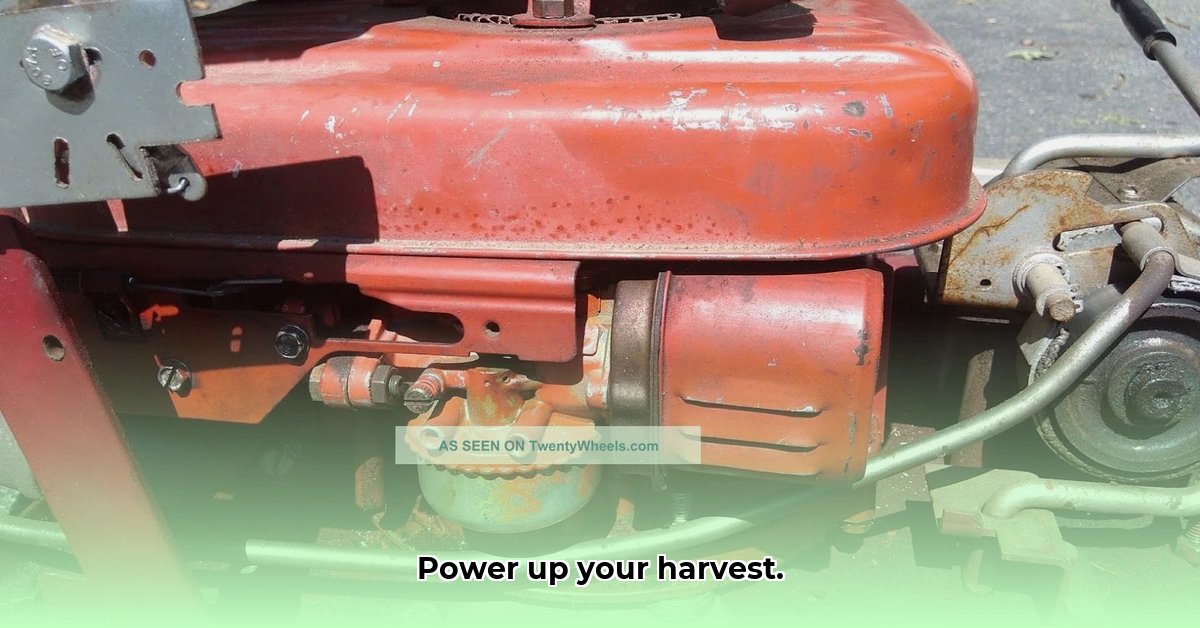
Continental Garden Tractor Batteries: Powering Sustainable Farming Practices
A reliable garden tractor is the backbone of many successful farms, and a dependable battery is its silent workhorse. Downtime due to a dead battery translates directly to lost productivity and revenue. This article explores the advantages of Continental garden tractor batteries for sustainable farming, offering a practical guide to selection, maintenance, and installation. We'll also address how these batteries contribute to environmentally friendly farming techniques. Isn't reliable power essential for maximizing your yields and minimizing your environmental impact? For more on replacement batteries, check out this helpful resource.
Choosing the Right Continental Garden Tractor Battery: Matching Power to Needs
Selecting the correct battery is crucial. Don't just grab any battery; match the specifications to your tractor's requirements, as detailed in your owner's manual. Two key metrics are Cold Cranking Amps (CCA) – the power it delivers in cold weather – and reserve capacity – how long it can supply power if the alternator fails. A higher CCA is beneficial in cold climates, ensuring reliable starts even on frosty mornings. Similarly, a higher reserve capacity provides a safety net should your alternator malfunction. Consider slightly exceeding the minimum recommended specifications for added resilience.
Extending Battery Lifespan: Proactive Maintenance for Optimal Performance
Regular maintenance significantly extends a battery's lifespan. Think of it as preventative medicine for your tractor: a little care goes a long way. Regularly inspect the terminals for corrosion (a whitish buildup). If present, gently clean them using a wire brush and a paste of baking soda and water. This simple step prevents poor connections that limit performance and shorten battery life. Also keep the battery case clean and dry. Avoid overcharging by disconnecting the charger once the battery is fully charged; using a smart charger is an even better approach.
Continental Batteries and Sustainable Farming: A Synergistic Partnership
Continental garden tractor batteries are not merely for starting tractors; they power a range of sustainable farming equipment that reduces environmental impact.
| Application | Sustainability Benefits | How a Continental Battery Contributes |
|---|---|---|
| Electric Sprayers | Precise chemical application, reduced waste, quieter operation. | Provides consistent power for efficient spraying. |
| Electric Tillers | Reduced fuel consumption, quieter operation, improved soil aeration. | Enables consistent tilling, even in challenging conditions. |
| Electric Fencing Systems | Humane animal control, crop protection, reduced fossil fuel use. | Delivers dependable power for extended periods. |
| Electric Water Pumps | Efficient irrigation, reduced reliance on fossil fuels. | Ensures reliable water pumping. |
By powering electric tools, Continental batteries contribute to noise reduction, lower greenhouse gas emissions, and potential cost savings, aligning perfectly with sustainable farming goals. Are you ready to embrace these environmentally friendly practices?
Installing Your New Battery: A Step-by-Step Guide
Replacing a garden tractor battery is manageable, but safety is paramount. Always work with the negative terminal first.
- Disconnect the negative (-) terminal.
- Disconnect the positive (+) terminal.
- Carefully remove the old battery. (They can be heavy!)
- Clean the battery tray to ensure a good connection.
- Install the new Continental garden tractor battery, ensuring it's secure.
- Secure the battery according to your tractor's manual.
- Connect the positive (+) terminal.
- Connect the negative (-) terminal.
Always double-check connections before starting the tractor.
A Balanced Perspective: Examining the Pros and Cons
Like any technology, Continental garden tractor batteries offer advantages and disadvantages.
Pros: Reliable performance, long lifespan with proper care, readily available, and competitively priced.
Cons: Requires occasional maintenance (cleaning, terminal checks), and proper disposal is essential for environmental protection via recycling.
Investing in a high-quality battery is a smart, long-term decision. The prevention of costly downtime far outweighs the initial investment. The reliable performance of your equipment directly influences your yields and your bottom line.
Integrating Renewable Energy into Your Sustainable Farming Operation
Integrating renewable energy sources like solar or wind power dramatically reduces reliance on fossil fuels, lowering operating costs and environmental impact.
Assessing your Farm's Power Consumption
Begin by conducting an energy audit to understand your farm's electricity and fuel consumption. Consider everything from irrigation pumps and lighting to machinery use. This assessment is vital for selecting the appropriate renewable energy solution.
Choosing the Right Renewable Energy Source
Numerous options exist, each with advantages and disadvantages:
- Solar Power: Cost-effective, reliable, and suitable for sunny locations.
- Wind Power: Excellent in windy areas, but with higher initial investment costs.
- Biofuels: Utilizing agricultural waste or dedicated energy crops, creating a closed-loop system.
Step-by-Step Renewable Energy Integration
- Assess Feasibility: Evaluate your energy needs and renewable energy options.
- Secure Funding: Explore grants, loans, and tax incentives for sustainable agriculture.
- Design and Installation: Work with qualified professionals for efficient system implementation.
- Grid Integration: Consider selling excess energy if suitable.
- Monitoring and Maintenance: Regular monitoring and maintenance are critical for optimal performance.
Challenges and Opportunities
While renewable energy offers vast potential, consider these factors: high upfront investment, land use considerations, and potential grid integration complexities. However, these challenges are often outweighed by reduced operating costs, increased profitability, and enhanced sustainability.